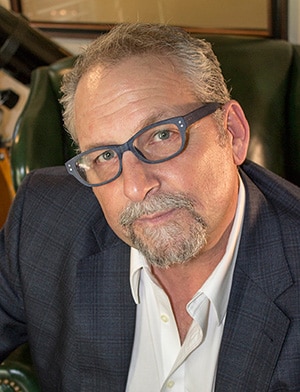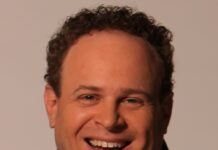
(By Paul Weyland) “What is the best schedule to recommend to a local direct client? I heard it was about 35 commercials a month or so, or OES.” That’s the question I was recently asked. Here are my thoughts on that subject.
Back in the early ’80s, the ratings industry introduced us to a revolutionary idea called “OES,” or “Optimum Effective Schedule.” The recommended schedule was based on the old “frequency of three” theory, which assumes that a listener or viewer has to be exposed to a commercial at least three times before they can process that information.
Why three times? Because a psychologist named Herbert Krugman, who was working for back in the 1960s, was trying to explain how people responded differently to TV ads than they did to print. But his research was misinterpreted by television executives who thought Krugman was saying that because of all the advertising clutter (way back in the early ’60s), the target consumer would have to be exposed to a TV advertisement three times before the message would sink in.
And to this day, you hear advertising agencies and media companies reciting to befuddled clients, “We must achieve a frequency of three! Thou shalt achieve a frequency of three!”
The obvious question is this: here we are, at least 50 years later, and in all those years … do you think advertising clutter has gotten better or worse? Well, it doesn’t take a rocket surgeon to figure that one out. I mean, after five decades, wouldn’t it make sense that today, in a much more cluttered media world, we should be striving to reach a frequency of eight or 12?
And that’s assuming Krugman wasn’t underestimating the needed frequency way back then.
But wait, there’s more! Does frequency of three refer to the effect of a great ad, a mediocre ad, or an ad that sucks? Here’s what I mean. Let’s say you owned a store and one day you lost your mind and advertised that “Today only, we’re giving away $100,000 to each of the first thousand people who walk into our store!” Gee, I wonder how many times you’d have to run that commercial. Just once? And that would be a frequency of much less than three. So ad content certainly has a great deal to do with the success or failure of a campaign.
A couple of years ago, on behalf of a local direct decisionmaker, I called a media rep from a large cluster. I told that rep that the client had a large budget and I was looking for a schedule with a lot of frequency. The rep responded with a computer-generated report that gave me a frequency of one. I reminded the rep that I was looking for a much larger schedule. The rep said, “Well, one is the new three.” Huh? When I asked him to explain, he said, “That’s what they told us to say.” Whatever.
So what kind of schedule should I recommend to my clients? I’ve been around long enough that I believe in running enough commercials to break through the noise. I believe that clients have the right to know how much it would cost them to own their category on your station. They might not be in a position to spend that much today, but they do have a right to know where they stand with regard to what their competitors are spending.
And by letting them in on the truth, we set the table on schedule cost. We don’t want to leave that part up to them. After all, we’re supposed to be the experts, not them. If we don’t take the wheel on what our clients spend, who will? The client? The agency? Your competitor?
By knowing your client’s gross margin of profit and average sale, along with what their competitors are spending, we can make a reasonable diagnosis and then prescribe an appropriate schedule. In other words, we begin by telling them how much they should be spending. Because if we ask them what their budget is, we’ll almost always get lowballed.
Value almost always trumps price. Educated people buy more than uneducated people. Therefore, it’s incumbent on us to create value in the client’s mind and then set the rate and sell a higher-frequency schedule. Because if we leave it up to the client, we’re no longer in charge. We’re just order takers. It’s up to us to convince them that advertising with our stations is not gambling, but instead a good, calculated risk.
And regarding “Optimum Effective Schedule” and “frequency of three”? Baloney. You still may have to continue to play that bogus game to get agency buys, but for local direct decisionmakers? An emphatic no. Please don’t introduce them to this nonsense. Use common sense, not mumbo jumbo contrived back in Mad Men times.
Paul Weyland specializes in helping broadcast stations get more long-term local direct business. Contact him at his website paulweyland.com or call 512.236.1222.








The crappy commercials we’re running combined with stingy schedules are causing needless cancellations and dips in ratings.
Reach and frequency are great elements that should be used to guide you to the most effective voice you can have in the marketplace. Every station is different, but at the end of the day if your messaging doesn’t offer a compel the listener to pay attention, starting with content, it won’t matter. It’s not so much how many times they hear what you have to say, it starts by asking yourself, why would the listener be interested in or need what I am selling and why would want it. If you don’t answer those questions, then how many times you say it to how many people really doesn’t matter.
Hear, hear!!!
I wonder if there are not times when Paul and other astute and experienced professionals do not get together for a couple of belts, and a suppressed moan about the pathetic lack of functional commercials being prepared for their clients.
Would it not, after extensive training and practice, be similar to a gladiator being thrust into the arena with a short stick and a coupon for a free pizza which is valid – ONLY IF, of course, they do survive?